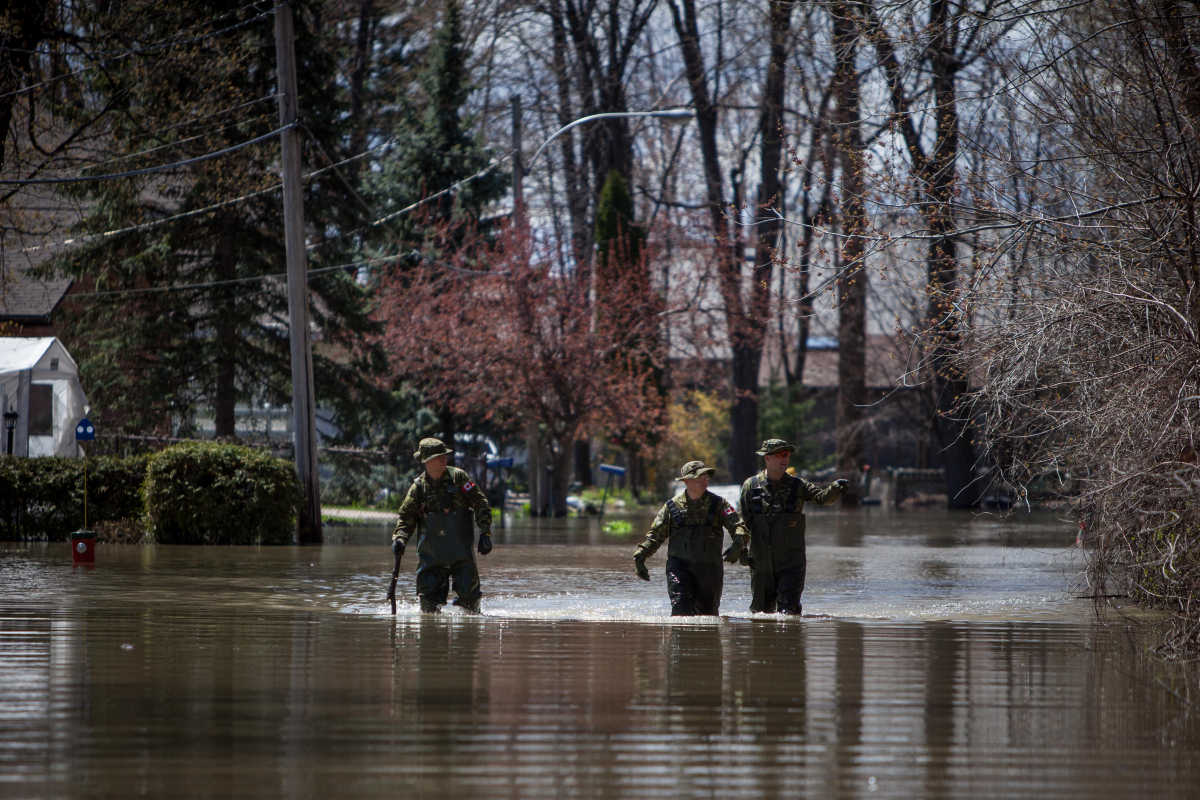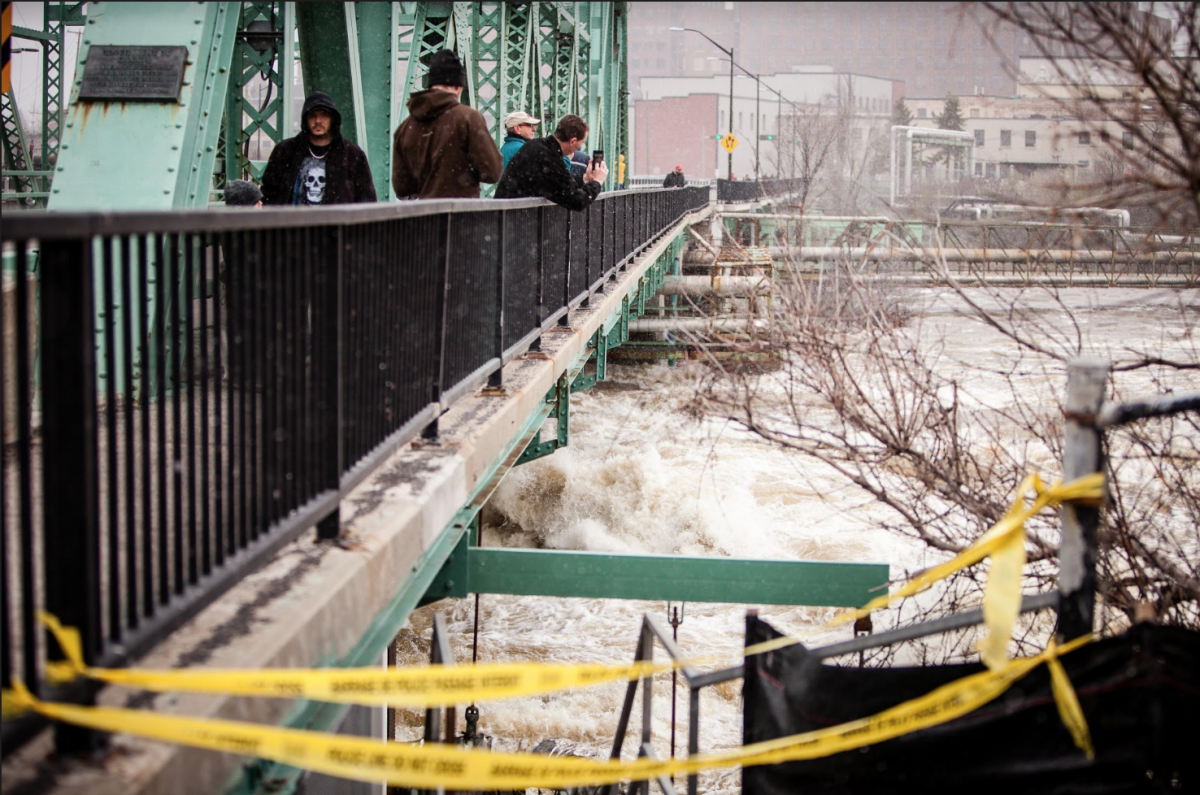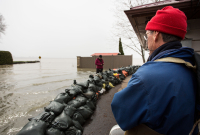Support strong Canadian climate journalism for 2025
Spring flooding in Canada this year upended lives, inundated city streets and swamped houses, prompting calls for sandbags, seawalls and dikes to save communities.
Ontario and Quebec’s April rainfall was double the 30-year average. Thousands of homes in 130 Quebec municipalities stretching from the Ontario border to the Gaspé Peninsula flooded in May. Montreal residents raced to protect their homes and families as three dikes gave way and the city declared a state of emergency. The Ontario government had to boost its resources for an emergency flood response.
In Atlantic Canada, some parts of New Brunswick recorded more than 150 millimetres of rain during a nearly 36-hour, non-stop downpour. In B.C.’s Okanagan, rapidly melting snowpack and swelling creeks caused lake levels to rise to record heights. The City of West Kelowna declared a state of emergency and evacuated homes.
Floods have become one of the most visible signs of the effects of climate change in cities, towns and rural areas throughout Canada.

Insurance costs are soaring
Spring floods aren’t unusual, but the intensity and frequency of recent rains are breaking records. The Intergovernmental Panel on Climate Change, the leading international body for climate change assessment, anticipates a significant increase in heavy precipitation events and flooding in many parts of the world, including Canada. When temperatures rise, the atmosphere carries more moisture so when it rains, it dumps. The Insurance Bureau of Canada found one in five Canadians faces some level of flood risk, and 1.8 million households are at very high risk.
Climate change–related events — including floods, drought and fires — are a drain on personal finances and the economy. With more than 80 significant floods in Canada since 2000, insurance costs are skyrocketing. The 2013 Alberta floods alone cost more than $6 billion. Canadians personally shoulder about $600 million each year in losses related to flooding. Around the world, insurers have paid out more than $200 billion over the past decade in claims for damages caused by coastal floods.
Deforestation, wetland destruction and artificial shoreline projects worsen the problem. Insurance agencies recognize that, compared to expensive infrastructure, keeping ecosystems healthy prevents climate disasters, saves money and improves resiliency. Lloyd’s of London encourages insurers to consider the value of natural coastal habitats when pricing flood risk. One study found ecosystems such as wetlands are more effective than seawalls in protecting against coastal storms. Insurers say conserving nature is about 30 times cheaper than building seawalls.
Still, many jurisdictions focus on engineered structures such as rock walls or even giant sea gates for coastal flooding, dams and levees to hold back rivers, and draining to prevent wetlands from overflowing. But built infrastructure costs cash-strapped municipalities money, requires more maintenance and is less flexible than keeping natural areas intact.

Is nature more effective than infrastructure?
Urban concrete and asphalt surfaces prevent water from infiltrating into the ground and increase storm-water runoff. Rain gardens, bioswales and permeable pavements better manage flooding by reducing runoff and protecting flood plains and foreshore areas.
Nature absorbs rainfall and prevents excess water from overwhelming pipe networks, backing up sewers and pooling in streets and basements. Restored river channels, parkways and beaches reduce costs, add valued amenities, increase access to nature and improve community health.
Many local governments are trying to keep up by limiting development in flood zones, better managing flood plains and updating flood-management systems. Some, such as Gibsons, B.C., are using a new approach that considers nature as a vital part of the town’s infrastructure and puts “natural capital” assets on equal footing with built assets. The Municipal Natural Assets Initiative helps local governments across Canada test this approach by giving them tools to identify and account for community natural assets and improve management.
The federal government has set aside $2 billion to help local governments defend against natural disasters like fire and flooding. It should allocate a significant portion to natural infrastructure solutions. This would create the foundation for a national study of how much natural infrastructure contributes to biodiversity conservation, economic productivity and climate change mitigation and adaptation.
Despite recent investments, Canada lags behind other G7 nations in flood preparation and climate change adaptation. It’s time we recognized the importance of intact nature and built green infrastructure as central to flood-prevention efforts. Nature can help us — if we let it.
— written with contributions from David Suzuki Foundation senior communications specialist Theresa Beer.





Comments
Let it be: natural infrastructure solution.